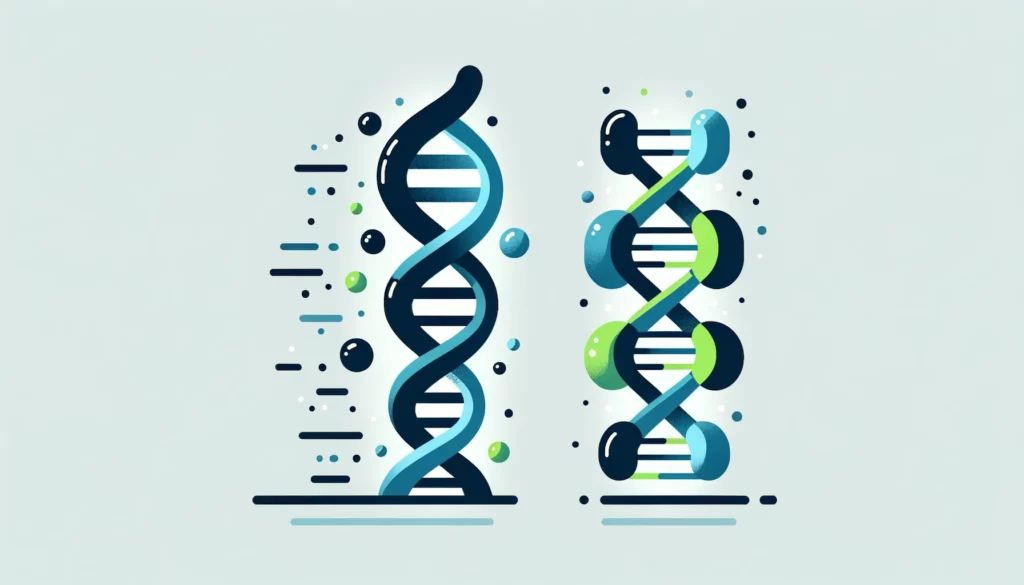Nucleic acids, DNA and RNA are large biomolecules that play essential roles in all types of cells. These nucleic acids are fast becoming an important part of science research. High quality RNA and DNA are also important to perform molecular experiments including COVID-19 rapid testing, reverse transcription real-time PCR (RT-qPCR), forensic sciences, detecting bacteria and viruses in the environment and determining paternity. Moreso, extracting RNA or DNA from cells is an important step in determining their characteristics including size, shape and functions.
However, releasing either of them can be tricky. RNA, for example, is single stranded unlike the double stranded DNA. This makes it difficult to release RNA intact. RNases, a class of enzymes that break down RNA, are usually abundant in the environment. This means that RNA release must be performed carefully to ensure the enzymes do not break it down—leading to low RNA yield. Moreso, there are several factors that affect DNA release. For one, poor storage conditions of samples can affect DNA yield. Samples from which the DNA will be extracted should be stored at a very cold temperature. Failure to mix samples well enough and incomplete cell lysis can also affect DNA extraction.

Do RNA/DNA have the same extraction method?
RNA and DNA have different methods of extractions due to the differences in their nature—RNA is single stranded while DNA is double stranded. RNA extraction usually requires at least 4 steps, at a pH of 4.0-4.7. It is usually extracted prior to use because it is less stable. However, DNA extraction usually requires 3 basic steps, at a pH of 7-8. DNA can be extracted in batches and stored for use.
Furthermore, both RNA and DNA require cell lysis as the first step of extraction. Cell lysis is a process in which the cell is broken down to release molecules. This process usually requires a lysis buffer. The buffer used for lysis is selected based on the type of cell source or sample from which the RNA or DNA will be released. Although there are different types of buffers, selecting a lysis buffer which can release DNA or RNA quickly and easily is important for molecular techniques.
One way to ensure only a high quality RNA or DNA is released is the use of microLYSIS Plus buffer.
What is a microLYSIS Plus buffer?
A microLYSIS Plus buffer works to release RNA or DNA in a ready to use format for different molecular tests including Polymerase Chain Reaction (PCR).
The microLYSIS buffer has the highest potential for accurate RNA representation. It can work well with extremely small samples and is scalable. It also breaks down the tough plants and animal cells including yeast, fungi and bacterial cells to release DNA samples. Moreso, the microLYSIS buffer can easily and quickly release RNA or DNA without any form of contamination.
How does microLYSIS Plus DNA release buffer work?
The microLYSIS buffer can work to release DNA from a wide range of samples including saliva, bacterial cells and spores.
The DNA samples are released by first mixing the cells with a measure of the microLYSIS Plus solution. Then the mixed cells with the lysis solution are placed in the thermocycle to release the DNA in an intact form. With microLYSIS®-Plus, DNA is intact, unlike when it is released with bead-beating systems.
Our microLYSIS Plus buffer can extract DNA samples ready for PCR in less than 30 minutes. Our range of microLYSIS Plus buffers are:
- microLYSIS Plus 1 ml containing 50 preparations.
- microLYSIS Plus 2×1ml containing 100 preps
- microLYSIS Plus 5×1ml containing 250 preps
- microLYSIS Plus 20×1ml containing 1000 preps
Conclusion
The use of microLYSIS Plus buffer ensures that DNA is intact during extraction. It also saves time and hastens the process of DNA release. The microLYSIS Plus buffer has proven to be a more effective method to obtain high quality RNA/DNA from tough sources.
To learn more about our microLYSIS Plus buffer products, visit here.

